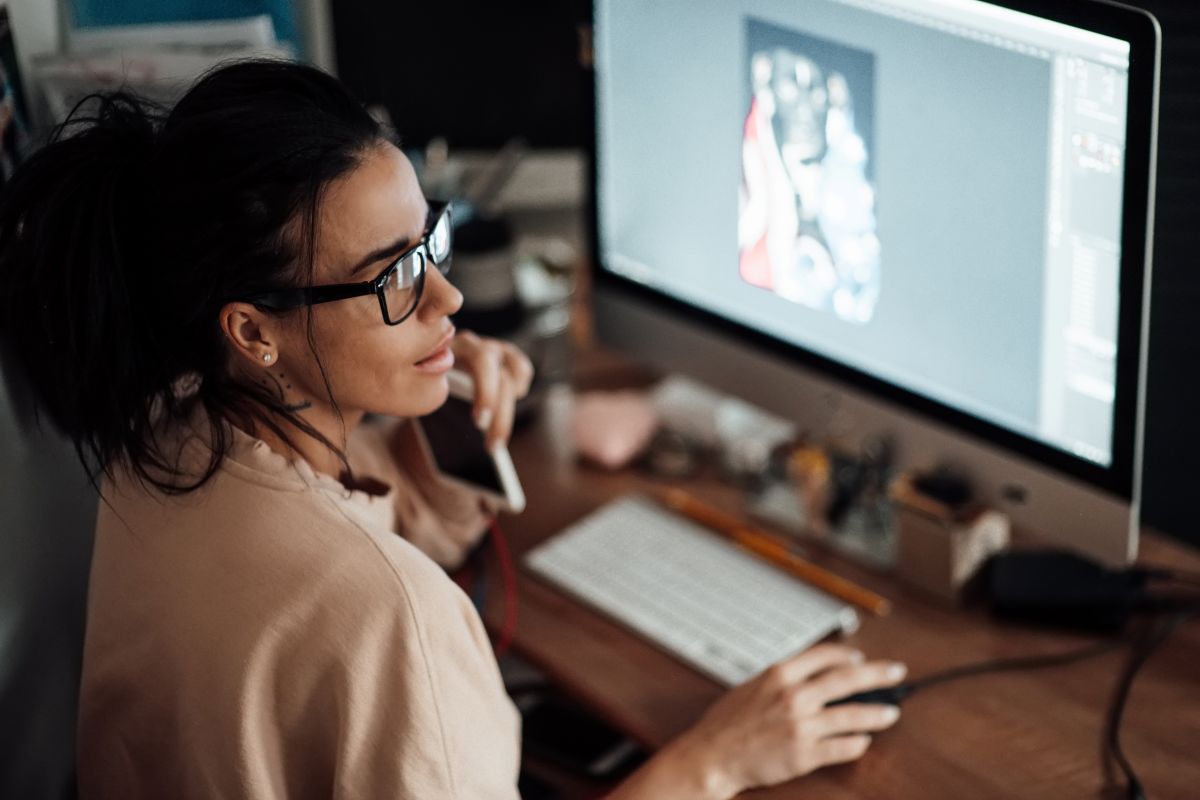
Will Motion Design Be Replaced by AI? Insights from Animation Studios in South Africa
Artificial intelligence has become a major topic of discussion across creative industries. For animation, particularly motion design, the rise of AI presents both opportunities and questions about the role of human expertise. As AI-driven processes become more sophisticated, there is a growing curiosity about how these tools will fit into the animation workflow and whether they could ever replace the value of professional teams. This is a significant question for animation studios in South Africa, where a balance between innovation and craftsmanship is essential to meet global production standards. Let’s explore how AI is shaping motion design, where it can add value, and why human input remains indispensable. This is not simply about whether AI will replace motion designers, but about understanding the evolving interplay between technology and creative expertise.
What is Motion Design?
Motion design is the practice of combining graphic design with animation principles to create dynamic visual content. It ranges from simple text animations to complex three-dimensional sequences that require detailed artistic and technical decisions. Motion design serves multiple purposes, such as brand communication, visual storytelling, and user interface experiences.
Professional animation studios in South Africa operate with a deep understanding of these demands. Their work extends beyond technical execution to include visual planning, conceptual development, and creative decision-making that reflects cultural and audience context.
AI in Motion Design
AI in motion design refers to the use of automated systems to assist or perform certain aspects of animation. These systems can process vast amounts of data, generate imagery, and automate repetitive processes. AI is increasingly present in pre-production planning, animation creation, and post-production workflows. For animation studios in South Africa, this raises the question of how to integrate AI without undermining the creative processes that define professional motion design.
How AI Can Be Used in Motion Design
1. Pre-Production
In pre-production, AI can streamline research, concept generation, and asset organisation. It can analyse reference materials, identify patterns, and suggest initial visual directions. However, concept refinement, thematic coherence, and brand alignment still require human oversight. Pre-production is where the creative intent is defined, and AI at this stage acts as an assistant rather than a decision-maker.
2. Production
During production, AI can expedite certain technical tasks such as procedural animation, rendering optimisation, or asset adaptation. These capabilities can reduce time spent on repetitive work, enabling studios to focus on creative adjustments. Even so, production remains reliant on human judgment for key artistic choices, including motion style, pacing, and integration of narrative elements.
3. Post-Production
AI in post-production can assist with colour correction, compositing, and versioning. This enhances efficiency, particularly for projects requiring multiple iterations. Yet, the final quality and artistic coherence depend on the discerning eye of a professional editor or motion designer.
How Does AI Affect Different Types of Animation
1. 2D Animation
In 2D animation, AI can support in-betweening, frame interpolation, and scene planning. While it can produce basic animation sequences, the creative input needed to design distinctive characters, refine motion for emotional impact, and establish style remains a human responsibility.
2. 3D Animation
AI is becoming more integrated in 3D workflows through tasks such as lighting simulation, scene generation, and asset adaptation. Still, the creation of immersive environments and precise artistic direction is an area where professional studios excel. The nuances of camera movement, texture quality, and narrative intent require expert human input.
3. Motion Graphics
Motion graphics can benefit significantly from AI-generated variations and procedural animation. Yet, the creative process of designing a coherent visual language that aligns with a brand’s identity cannot be reduced to automation alone. This makes professional motion design teams essential for translating ideas into meaningful visual communication.
How AI Is Shaping Motion Design Trends
AI is influencing motion design in distinct ways, shaping how animation is created and experienced:
Procedural animation adapting to real-time data
This trend uses algorithms to generate motion based on live inputs, such as data feeds or environmental changes. It enables animations to react dynamically, adding responsiveness that was previously difficult to achieve. For animation studios in South Africa, this offers opportunities for interactive work and projects that respond to context in real time.
Generative design creating unique visuals
AI can produce one-of-a-kind visual elements through algorithmic processes. This allows motion designers to explore styles and patterns beyond manual creation, introducing novel aesthetics while freeing designers to focus on creative direction.
Personalised animation content
AI can adapt animation to suit individual viewers by analysing preferences and interactions. This creates the possibility for customised experiences, from tailored brand animations to interactive storytelling, though it still requires thoughtful design to keep content purposeful.
These trends show how AI can expand creative possibilities. The challenge for the industry is integrating these developments while maintaining artistic integrity and the human input audiences value.
AI’s Impact on Animation Production Costs and Efficiency
1. Budget Considerations
AI can reduce costs in certain areas of production by streamlining repetitive tasks and lowering the time required for technical processes. However, it is not a substitute for the creative labour that defines high-quality motion design. For professional studios, the cost-benefit balance depends on aligning efficiency gains with maintaining creative value.
2. Workflow Efficiency
The integration of AI can accelerate production timelines, particularly in areas such as asset generation, rendering, and versioning. This can allow animation studios to manage larger projects or meet tight deadlines without compromising quality. Yet, the creative decision-making and contextual awareness essential to professional animation cannot be automated.
Will AI Be Able to Replace Motion Designers?
AI’s Limits in Emotional Expression
AI can analyse trends and patterns, but it lacks the ability to interpret culture, human behaviour, and subtle emotion in the way a skilled designer can. Effective motion design often requires empathy and a deep understanding of audience psychology, capacities that remain uniquely human.
Automation Limits and Human Creativity
AI can handle repetitive or data-heavy tasks. It can generate drafts, suggest visual variations, and process technical work quickly. What it cannot replace is the human capability to interpret briefings, make creative choices, and ensure consistency of vision. Professional animation studios in South Africa add value by applying artistic judgement and cultural insight in ways AI alone cannot replicate.
Challenges and Limitations of AI in Motion Design
Despite its capabilities, AI has limitations that remain relevant:
- Originality: AI depends on existing data and patterns, limiting its ability to create truly novel ideas.
- Ethical considerations: AI raises questions about ownership, creative credit, and data bias.
- Skill requirements: Integrating AI effectively requires professional knowledge and technical expertise.
These limitations underscore the continued need for experienced motion designers.
AI and Motion Design: A Collaborative Future
The future of motion design will not be AI replacing human designers, but a collaboration between human expertise and intelligent systems. AI will continue to refine production processes, but the human role will shift towards guiding, curating, and enhancing creative outputs. For animation studios in South Africa, this means maintaining a focus on human creativity while integrating AI where it can add efficiency without compromising quality.
Looking Ahead
AI will remain a growing influence in motion design, offering capabilities that can transform production speed, visual experimentation, and adaptability. Yet, animation is not just a process, it is an art that relies on human direction, interpretation, and creativity. For animation studios in South Africa, the opportunity lies in using AI to enhance workflows while preserving the artistry that defines professional animation.
Understanding this dynamic is not about resisting change, but about integrating innovation in ways that strengthen the craft of motion design rather than replace it. The future is one where technology and human creativity work side by side, ensuring animation remains a human-led art supported by technological advancement.
The future of motion design is not a choice between AI or human creativity, it is about how they work together. This requires thoughtful planning and professional expertise to ensure creativity is not lost in the process. Speak to our team at Sound Idea Digital to explore how this collaboration can bring depth and efficiency to your upcoming project.
We are a full-service Web Development and Content Production Agency in Gauteng specialising in Video Production, Animation, eLearning Content Development, Learning Management Systems, and Content Production.
Contact us for a quote. | enquiries@soundidea.co.za | https://www.soundideavideoproduction.co.za| +27 82 491 5824 |

